
Harlowton is a city in and the county seat of Wheatland County, Montana, United States. The population was 955 at the 2020 census.

Dinosaur National Monument is an American national monument located on the southeast flank of the Uinta Mountains on the border between Colorado and Utah at the confluence of the Green and Yampa rivers. Although most of the monument area is in Moffat County, Colorado, the Dinosaur Quarry is located in Utah, north of the town of Jensen, Utah. The nearest Colorado town is Dinosaur while the nearest city is Vernal, Utah.

The Carnegie Museum of Natural History is a natural history museum in the Oakland neighborhood of Pittsburgh, Pennsylvania. It was founded by Pittsburgh-based industrialist Andrew Carnegie in 1896. Housing some 22 million specimens, the museum features one of the finest paleontological collections in the world.
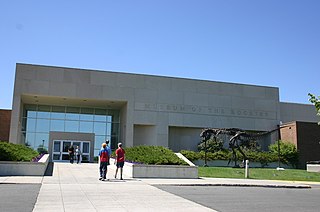
Museum of the Rockies is a museum in Bozeman, Montana. Originally affiliated with Montana State University in Bozeman, and now also, the Smithsonian Institution. The museum is largely known for its Paleontological collections as well as having the largest collection of North American Dinosaur fossils in the United States. They also possess the largest Tyrannosaurus skull ever discovered, as well as the thigh bone of a Tyrannosaurus Rex that contains soft-tissue remains. The museum is part of the Montana Dinosaur Trail and is Montana's official repository for Paleontological specimens.

Denversaurus is a genus of panoplosaurin nodosaurid dinosaur from the late Maastrichtian of Late Cretaceous Western North America. Although at one point treated as a junior synonym of Edmontonia by some taxonomists, current research indicates that it is its own distinct nodosaurid genus.
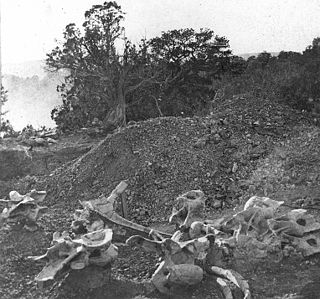
Garden Park is a paleontological site in Fremont County, Colorado, known for its Jurassic dinosaurs and the role the specimens played in the infamous Bone Wars of the late 19th century. Located 10 km (6.2 mi) north of Cañon City, the name originates from the area providing vegetables to the miners at nearby Cripple Creek in the 19th century. Garden Park proper is a triangular valley surrounded by cliffs on the southeast and southwest and by mountains to the north; however, the name is also refers to the dinosaur sites on top and along the cliffs. The dinosaur sites now form the Garden Park Paleontological Resource Area, which is overseen by the Bureau of Land Management.

The Rocky Mountain Dinosaur Resource Center is a fossil museum primarily exhibiting fossil organisms of North America's Late Cretaceous including dinosaurs, pterosaurs, marine reptiles, and fish. The museum includes a fossil preparation lab and a large gift shop. Live tours are delivered by visitor experience guides highlighting the history of the individual specimens as well as the paleontology of the fossil species they represent. The RMDRC is headquarters to its parent company, Triebold Paleontology Incorporated.

Tyrannosaurus rex is one of the most iconic dinosaurs and is known from numerous specimens, some of which have individually acquired notability due to their scientific significance and media coverage.
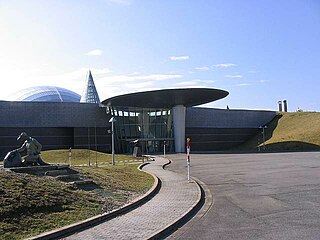
The Fukui Prefectural Dinosaur Museum, located in Katsuyama, Fukui, Japan, is one of the leading dinosaur museums in Asia that is renowned for its exhibits of fossil specimens of dinosaurs and paleontological research. It is sited in the Nagaoyama Park near the Kitadani Dinosaur Quarry that the Lower Cretaceous Kitadani Formation of the Tetori Group is cropped out and a large number of dinosaur remains including Fukuiraptor kitadaniensis and Fukuisaurus tetoriensis are found and excavated.
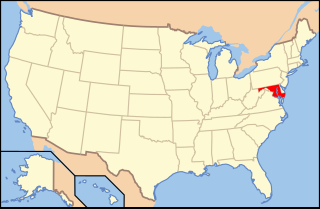
Paleontology in Maryland refers to paleontological research occurring within or conducted by people from the U.S. state of Maryland. The invertebrate fossils of Maryland are similar to those of neighboring Delaware. For most of the early Paleozoic era, Maryland was covered by a shallow sea, although it was above sea level for portions of the Ordovician and Devonian. The ancient marine life of Maryland included brachiopods and bryozoans while horsetails and scale trees grew on land. By the end of the era, the sea had left the state completely. In the early Mesozoic, Pangaea was splitting up. The same geologic forces that divided the supercontinent formed massive lakes. Dinosaur footprints were preserved along their shores. During the Cretaceous, the state was home to dinosaurs. During the early part of the Cenozoic era, the state was alternatingly submerged by sea water or exposed. During the Ice Age, mastodons lived in the state.

Paleontology in Missouri refers to paleontological research occurring within or conducted by people from the U.S. state of Missouri. The geologic column of Missouri spans all of geologic history from the Precambrian to present with the exception of the Permian, Triassic, and Jurassic. Brachiopods are probably the most common fossils in Missouri.

Paleontology in Texas refers to paleontological research occurring within or conducted by people from the U.S. state of Texas. Author Marian Murray has said that "Texas is as big for fossils as it is for everything else." Some of the most important fossil finds in United States history have come from Texas. Fossils can be found throughout most of the state. The fossil record of Texas spans almost the entire geologic column from Precambrian to Pleistocene. Shark teeth are probably the state's most common fossil. During the early Paleozoic era Texas was covered by a sea that would later be home to creatures like brachiopods, cephalopods, graptolites, and trilobites. Little is known about the state's Devonian and early Carboniferous life. Evidence indicates that during the late Carboniferous the state was home to marine life, land plants and early reptiles. During the Permian, the seas largely shrank away, but nevertheless coral reefs formed in the state. The rest of Texas was a coastal plain inhabited by early relatives of mammals like Dimetrodon and Edaphosaurus. During the Triassic, a great river system formed in the state that was inhabited by crocodile-like phytosaurs. Little is known about Jurassic Texas, but there are fossil aquatic invertebrates of this age like ammonites in the state. During the Early Cretaceous local large sauropods and theropods left a great abundance of footprints. Later in the Cretaceous, the state was covered by the Western Interior Seaway and home to creatures like mosasaurs, plesiosaurs, and few icthyosaurs. Early Cenozoic Texas still contained areas covered in seawater where invertebrates and sharks lived. On land the state would come to be home to creatures like glyptodonts, mammoths, mastodons, saber-toothed cats, giant ground sloths, titanotheres, uintatheres, and dire wolves. Archaeological evidence suggests that local Native Americans knew about local fossils. Formally trained scientists were already investigating the state's fossils by the late 1800s. In 1938, a major dinosaur footprint find occurred near Glen Rose. Pleurocoelus was the Texas state dinosaur from 1997 to 2009, when it was replaced by Paluxysaurus jonesi after the Texan fossils once referred to the former species were reclassified to a new genus.

Paleontology in Colorado refers to paleontological research occurring within or conducted by people from the U.S. state of Colorado. The geologic column of Colorado spans about one third of Earth's history. Fossils can be found almost everywhere in the state but are not evenly distributed among all the ages of the state's rocks. During the early Paleozoic, Colorado was covered by a warm shallow sea that would come to be home to creatures like brachiopods, conodonts, ostracoderms, sharks and trilobites. This sea withdrew from the state between the Silurian and early Devonian leaving a gap in the local rock record. It returned during the Carboniferous. Areas of the state not submerged were richly vegetated and inhabited by amphibians that left behind footprints that would later fossilize. During the Permian, the sea withdrew and alluvial fans and sand dunes spread across the state. Many trace fossils are known from these deposits.

Paleontology in Utah refers to paleontological research occurring within or conducted by people from the U.S. state of Utah. Utah has a rich fossil record spanning almost all of the geologic column. During the Precambrian, the area of northeastern Utah now occupied by the Uinta Mountains was a shallow sea which was home to simple microorganisms. During the early Paleozoic Utah was still largely covered in seawater. The state's Paleozoic seas would come to be home to creatures like brachiopods, fishes, and trilobites. During the Permian the state came to resemble the Sahara desert and was home to amphibians, early relatives of mammals, and reptiles. During the Triassic about half of the state was covered by a sea home to creatures like the cephalopod Meekoceras, while dinosaurs whose footprints would later fossilize roamed the forests on land. Sand dunes returned during the Early Jurassic. During the Cretaceous the state was covered by the sea for the last time. The sea gave way to a complex of lakes during the Cenozoic era. Later, these lakes dissipated and the state was home to short-faced bears, bison, musk oxen, saber teeth, and giant ground sloths. Local Native Americans devised myths to explain fossils. Formally trained scientists have been aware of local fossils since at least the late 19th century. Major local finds include the bonebeds of Dinosaur National Monument. The Jurassic dinosaur Allosaurus fragilis is the Utah state fossil.
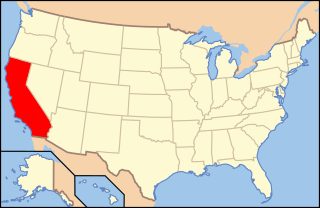
Paleontology in California refers to paleontologist research occurring within or conducted by people from the U.S. state of California. California contains rocks of almost every age from the Precambrian to the Recent. Precambrian fossils are present but rare in California.

Paleontology in the United States refers to paleontological research occurring within or conducted by people from the United States. Paleontologists have found that at the start of the Paleozoic era, what is now "North" America was actually in the southern hemisphere. Marine life flourished in the country's many seas. Later the seas were largely replaced by swamps, home to amphibians and early reptiles. When the continents had assembled into Pangaea drier conditions prevailed. The evolutionary precursors to mammals dominated the country until a mass extinction event ended their reign.

The Raymond M. Alf Museum of Paleontology is a paleontology museum in Claremont, California, that is part of The Webb Schools. It is the only nationally accredited museum on a secondary school campus in the United States. The museum has two circular 4,000 sq. ft. exhibition halls and 20,000 unique annual visitors. The collections number about 140,000 specimens, 95% of which were found by Webb students on fossil-collecting trips called “Peccary Trips,” expeditions usually centered in California, Utah, and Montana. The collections consist primarily of vertebrate, invertebrate, and track fossils and the museum's large track collection is widely recognized as one of the most diverse in the world.
Wakinyantanka is an ichnogenus of footprint produced by a large theropod dinosaur from the Late Cretaceous Hell Creek Formation of South Dakota. Wakinyantanka tracks are large with three long, slender toes with occasional impressions of a short hallux and narrow metatarsals. Wakinyantanka was the first dinosaur track to be discovered in the Hell Creek Formation, which remain rare in the preservational conditions of the rocks. The potential trackmakers may be a large oviraptorosaur or a small tyrannosaurid.
Marion Charles Bonner (1911–1992), based for most of his life in Leoti, Kansas, was an American field paleontologist who discovered and collected hundreds of fossils, primarily from the Niobrara Cretaceous Smoky Hill chalk outcroppings in Logan, Scott, and Gove counties of western Kansas. Largely self-taught, he frequently collaborated with museum paleontologists, including George F. Sternberg, at Fort Hays State University in Hays, Kansas, and Shelton P. Applegate, at the Los Angeles County Museum of Natural History.


















